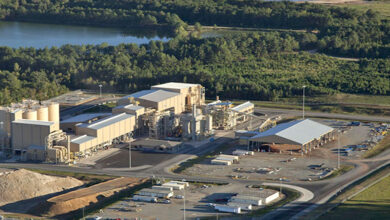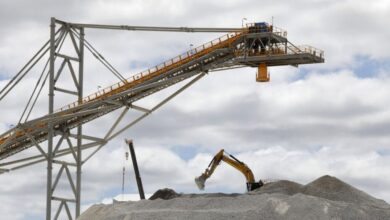
- Emerging technologies are revolutionizing the field of mineral exploration, providing unprecedented opportunities for the discovery and extraction of valuable resources. Remote sensing technologies, AI-powered data analysis, advanced drilling techniques, and autonomous robots are reshaping the way mining companies approach exploration efforts. As these technologies continue to evolve, the mining industry must adapt and embrace these innovations to maximize efficiency, reduce environmental impact, and ensure the sustainable extraction of Earth's hidden treasures.
In the relentless pursuit of mineral resources, humanity has always sought new ways to uncover hidden treasures buried beneath the Earth’s surface. Now, with the advent of cutting-edge technologies, the field of mineral exploration is undergoing a revolution. From advanced imaging techniques to AI-powered data analysis, these emerging technologies are transforming the way we discover and extract valuable resources, promising to unlock untapped potential and reshape the mining industry as we know it.
One of the most significant advancements in mineral exploration is the integration of remote sensing technologies. Satellites equipped with hyperspectral imaging sensors have enabled geologists to detect minerals with unparalleled accuracy from space. By analyzing the reflected light from the Earth’s surface, these sensors can identify unique spectral signatures associated with specific minerals. This allows for the identification of mineral deposits that were previously hidden from traditional exploration methods, facilitating targeted and efficient exploration efforts.
Ground-based remote sensing techniques are also gaining prominence. Unmanned aerial vehicles (UAVs), equipped with high-resolution cameras and LiDAR (Light Detection and Ranging) systems, are revolutionizing the way mineral exploration is conducted. These drones can quickly and efficiently capture detailed imagery and topographic data, providing geologists with valuable insights into the geological composition of an area. By analyzing these data sets, experts can pinpoint areas with the highest potential for mineral deposits, saving both time and resources.
Artificial Intelligence (AI) and machine learning algorithms have also become invaluable tools in the mineral exploration process. These technologies have the ability to analyze vast amounts of geological and geophysical data, enabling geologists to identify patterns and correlations that may not be evident to the human eye. By leveraging AI, mining companies can optimize their exploration strategies, focusing on areas with the highest likelihood of success. This not only streamlines the exploration process but also reduces the environmental impact by minimizing unnecessary excavation.
Drilling, a crucial component of mineral exploration, is also benefiting from technological advancements. Traditional drilling methods can be time-consuming and expensive, often resulting in significant waste. However, new drilling technologies, such as sonic drilling and coiled tubing drilling, have emerged as faster and more efficient alternatives. Sonic drilling uses high-frequency vibrations to pulverize the ground, allowing for quicker and more precise extraction of samples. Coiled tubing drilling, on the other hand, employs a continuous tubing system that eliminates the need for traditional drill rods, reducing drilling time and costs significantly.
Another promising area of development is the use of autonomous robots in mineral exploration. These robots can navigate challenging terrains and collect data from inaccessible areas, reducing the risk to human operators. Equipped with various sensors, including spectrometers and magnetometers, these robots can analyze and transmit data in real-time, enabling geologists to make informed decisions without physically being present at the site. This technology has the potential to revolutionize the safety and efficiency of mineral exploration, especially in remote or hazardous environments.
While emerging technologies present immense opportunities for the mining industry, challenges and ethical considerations should not be overlooked. The integration of these technologies requires substantial investment in research and development, as well as training the workforce to effectively utilize them. Additionally, concerns regarding data security, privacy, and the potential displacement of human workers need to be addressed.




